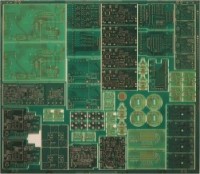
Many designers who create a printed circuit board, know little about the field of EMC. Why should they since at the physical level, why worry, EMC is an electrical issue and not mechanical or structural. For at least two generations, engineers will specify FR-4, because nothing else exist or they are unaware of what occurs in a physical design when using this material.
Management mandates FR-4 because of low cost. Fiberglass Resin (FR) has been used for decades so why change. There are however applications and usage beyond the world of FR-4 such as military, satellite applications, harsh environmental conditions and other unique environments of use. When using FR-4 in high frequency digital applications, should we be concerned more with electrical performance or low cost?
One reason why FR-4 is becoming obsolete for today’s products deals not only with dielectric loss but also weave density and layout of the fiberglass strands. There is also the RoHS (Restriction of Hazardous Substance) Directive in Europe, China and North America. The RoHS Directive makes the use of lead in any product illegal, which include a particular type of solder. Typical solder consists of PbSn (60% tin-40% lead). Since PbSn solder is now prohibited on a near world-wide basis, an alternative metallurgy material is now required which includes Nickel and other alloys. These alloys lead to microscopic problems known as “tin whiskers”, among other items. Over time, small metallic whiskers may grow from a soldered joint that could short out circuits causing system wide failure. NASA has significant documentation on tin whisker growth as well as the Raytheon Corporation. Another concern that is even greater why FR-4 is becoming obsolete for technologies of the future operating in the GHz range is that in order to use the new alloy of solder, higher processing temperatures are required to ensure melting during reflow. With higher process temperatures, the resin used to hold the fiberglass stands together will start to evaporate water in the resin and delamination of the copper from the fiberglass core occurs. We now a reliability concern.
Should we worry more about electrical performance for high technology products using FR-4, or just keep using low cost material because after all, quality with regard to functional operation is less important than cost?





Leave a Reply